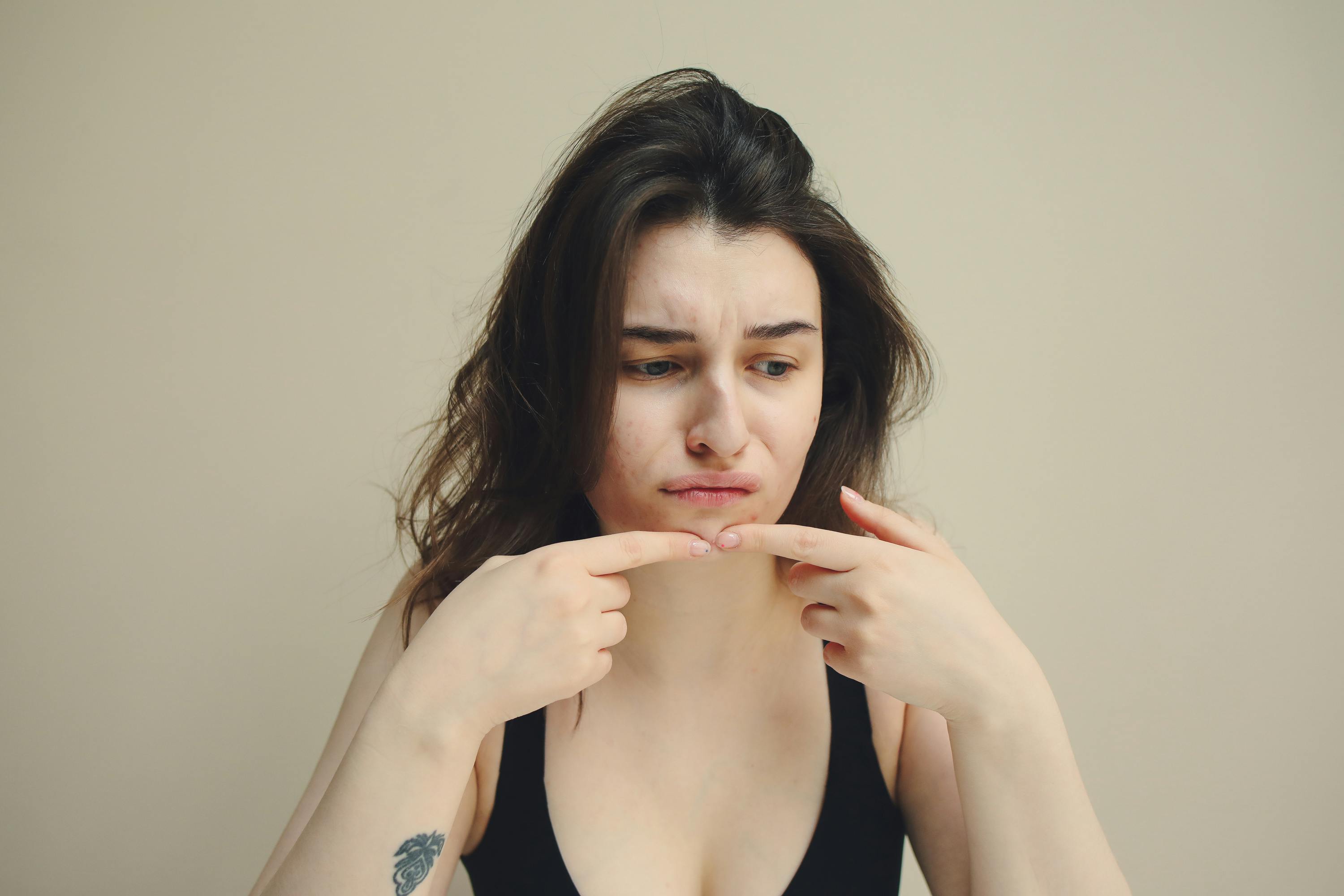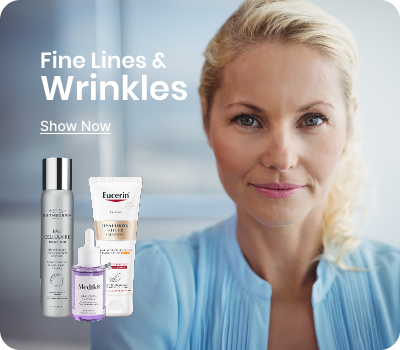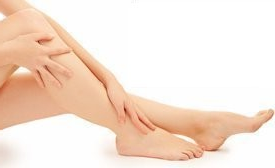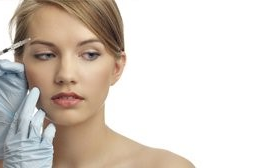
Acne and blemishes are more than just skin-deep concerns; they impact self-confidence, emotional well-being, and overall quality of life. For many, finding an effective skincare solution can feel like an endless cycle of trial and error. The key to breaking this cycle lies in understanding the ingredients that truly make a difference. By selecting scientifically backed, potent ingredients, you can target the root causes of acne and blemishes, rather than just masking the symptoms. This guide will explore the best ingredients for fighting acne, how they work, and how to use them correctly.
The Science Behind Acne & Blemishes
Acne is a common skin condition that occurs when the hair follicles become clogged with oil, dead skin cells, and bacteria, leading to inflammation and the formation of blemishes. Understanding the science behind acne can help in selecting the most effective treatment strategies.
What Triggers Acne?
Acne formation is a complex process influenced by a combination of biological and environmental factors:
- Excess Sebum (Oil) Production: When sebum glands overproduce oil, it can mix with dead skin cells and clog hair follicles, creating the perfect environment for breakouts.
- Bacterial Overgrowth: The skin naturally hosts bacteria, but an overgrowth can trigger an inflammatory response, leading to the formation of red, swollen pimples.
- Inflammation and Skin Irritation: When the immune system detects bacterial overgrowth or clogged pores, it responds with inflammation, resulting in redness, swelling, and discomfort. Factors such as harsh skincare products, frequent touching of the face, or friction from clothing and masks can further irritate the skin.
- Hormonal Fluctuations: Hormones, particularly androgens like testosterone, play a significant role in acne development. They can increase oil production and lead to more frequent breakouts. This is why acne is common during puberty, menstruation, pregnancy, and times of hormonal imbalance.
Types of Blemishes
Not all acne is the same—different types of blemishes require different approaches to treatment. The most common types include:
- Whiteheads (Closed Comedones): These occur when a clogged pore remains sealed beneath the skin’s surface, forming a small, rose-coloured or white bump. Whiteheads are non-inflammatory but can become irritated if not properly managed.
- Blackheads (Open Comedones): Similar to whiteheads, blackheads form due to clogged pores, but the pore remains open. When exposed to air, the trapped debris oxidises, giving the blemish its characteristic dark appearance.
- Papules & Pustules: Papules are small, red, inflamed bumps that develop when clogged pores become irritated. When pus accumulates inside, they evolve into pustules, which are more noticeable, swollen, and contain a white or yellow centre.
- Cystic Acne: This is the most severe form of acne, characterised by large, painful, deep-seated nodules beneath the skin. Cystic acne often results in scarring and requires more aggressive treatment, such as prescription medication or dermatological procedures.
To effectively treat acne, a targeted approach using proven ingredients is essential.
Salicylic Acid: The Pore-Purifying Powerhouse
Salicylic acid is a beta-hydroxy acid (BHA) widely recognised for its powerful ability to combat acne and improve overall skin health. Salicylic acid is oil-soluble, allowing it to penetrate deep into the pores. This makes it particularly effective for individuals with oily and acne-prone skin, as it helps dissolve excess sebum, unclog pores, and promote a clearer complexion.
Benefits of Salicylic Acid
- Deep Exfoliation for Clearer Pores: As a chemical exfoliant, salicylic acid gently dissolves the bonds holding dead skin cells together. This helps slough off debris from the skin’s surface and within pores and prevent future blockages.
- Oil Control Without Over-Drying: Salicylic acid minimises the formation of new blemishes while keeping the skin balanced.
- Reduces Inflammation and Redness: Salicylic acid possesses anti-inflammatory properties that help calm irritated skin and reduce the redness associated with acne. This makes it particularly beneficial for those dealing with inflamed pimples and pustules.
- Unclogs and Minimises Pores: By keeping pores clear, salicylic acid helps refine their appearance, giving the skin a smoother, more refined look.
- Fades Acne Scars and Hyperpigmentation: Salicylic acid helps fade post-acne marks and discolouration by accelerating cell turnover, promoting a more even complexion over time.
- Prevents Future Breakouts: By reducing bacteria buildup, salicylic acid works proactively to prevent new blemishes from forming.
How to Use Salicylic Acid Effectively
- Look for cleansers, toners, serums or spot treatments with 0.5% to 2% salicylic acid.
- Use it daily or a few times a week, depending on skin tolerance.
- Always follow with a moisturiser to prevent dryness and wear sunscreen during the day, as exfoliation can increase sun sensitivity.
Benzoyl Peroxide: The Bacteria-Fighting Essential
Unlike other acne-fighting ingredients that focus primarily on exfoliation or oil control, benzoyl peroxide directly targets the root cause of many breakouts: the bacteria responsible for inflamed pimples. By eliminating these bacteria and reducing excess oil, benzoyl peroxide helps clear existing acne and prevents future flare-ups.
Benefits of Benzoyl Peroxide
- Eliminates Acne-Causing Bacteria: Benzoyl peroxide works by releasing oxygen into the pores, creating an environment where bacteria cannot survive. This makes it a reliable long-term treatment option for bacterial acne.
- Reduces Oil Production: Benzoyl peroxide helps regulate sebum levels, keeping the skin balanced and reducing the likelihood of new pimples forming.
- Clears Existing Breakouts Faster: Benzoyl peroxide works quickly to reduce the size and redness of inflamed acne. It helps dry out active blemishes, speeding up the healing process.
- Prevents Future Acne Flare-Ups: By continuously keeping bacteria levels low and minimising clogged pores, benzoyl peroxide helps prevent new pimples from forming.
- Reduces Inflammation and Redness: Benzoyl peroxide has mild anti-inflammatory properties that help soothe the skin and promote a more even complexion over time.
How to Use Benzoyl Peroxide Effectively
- Look for cleansers, spot treatments, gels and creams with a lower concentration (2.5% or 5%) and gradually increase if needed.
- Apply once daily or every other day, especially for sensitive skin.
- Always follow up with a moisturiser to prevent excessive dryness.
- Use sunscreen during the day, as benzoyl peroxide can increase sun sensitivity.
Niacinamide: The Multi-Tasking Skin Soother
Niacinamide, also known as Vitamin B3, works by strengthening the skin barrier, regulating oil production, calming inflammation, and enhancing overall skin texture, making it an essential ingredient in many modern skincare formulations for acne and blemishes.
Benefits of Niacinamide
- Regulates Sebum Production: Niacinamide helps balance sebum levels, reducing the likelihood of clogged pores while maintaining adequate hydration. This makes it particularly beneficial for individuals with oily or combination skin.
- Reduces Redness and Inflammation: Niacinamide has potent anti-inflammatory properties that help soothe irritated skin, calm redness, and minimise post-acne marks, leading to a more even complexion.
- Minimises the Appearance of Pores: By regulating sebum production and supporting healthy skin cell turnover, niacinamide helps refine the skin’s texture, making pores appear smaller and less noticeable over time.
- Strengthens the Skin Barrier: Niacinamide boosts the production of ceramides, which reinforce the skin’s natural protective layer, keeping it resilient and hydrated.
- Fades Hyperpigmentation and Acne Scars: Niacinamide inhibits excess melanin production, which helps fade dark spots, acne scars, and discolouration.
How to Use Niacinamide Effectively
- Apply niacinamide after cleansing and before heavier creams or oils.
- Look for serums with 5% niacinamide for optimal results.
- Always follow up with a moisturiser to prevent excessive dryness.
- It pairs well with other skincare ingredients like hyaluronic acid, salicylic acid, and zinc.
- Use it twice daily (morning and night) for best results.
- Always wear sunscreen during the day to protect against UV-induced pigmentation and damage.
Retinoids: The Gold Standard for Clearer Skin
Retinoids are widely recognised as one of the most effective treatments for acne, skin texture, and overall complexion enhancement. These natural derivatives of vitamin A function by increasing the rate at which skin cells shed and regenerate, helping to prevent the buildup of dead skin cells, which can mix with oil and lead to clogged pores, blackheads, and breakouts.
Benefits of Retinoids
- Unclog Pores and Reduce Acne Severity: By preventing dead skin cells from accumulating inside hair follicles, retinoids help reduce the formation of comedones (whiteheads and blackheads) and inflammatory acne.
- Fade Post-Acne Marks and Scars: Retinoids help fade hyperpigmentation and even out skin tone by accelerating cell turnover and stimulating collagen production, making scars and discolouration less visible over time.
- Prevent Future Breakouts: By consistently keeping pores clear and regulating skin cell turnover, retinoids help prevent new acne from forming, making them a long-term solution for maintaining clear skin.
- Improve Skin Texture and Tone: Retinoids smooth rough patches, refine pores, and promote a more even complexion, making skin look healthier and more radiant.
How to Use Retinoids Effectively
- Begin with a low concentration and apply every other night to allow your skin to adjust.
- A small amount is enough to cover the entire face. Applying too much can increase irritation without improving effectiveness.
- Always follow up with a gentle, hydrating moisturiser.
- Retinoids increase skin sensitivity to UV rays, making sunscreen (SPF 30 or higher) essential to prevent sun damage and further pigmentation.
- Be patient – results take time. The most significant changes often occur after three to six months of consistent use.
Azelaic Acid: The Gentle Yet Powerful Acne Fighter
Azelaic acid is a dermatologist-approved skincare ingredient that offers a unique combination of acne-fighting, brightening, and anti-inflammatory benefits. Derived from grains such as barley, wheat, and rye, it works by targeting multiple skin concerns while remaining gentle enough for sensitive skin types.
Benefits of Azelaic Acid
- Reduces Inflammation and Redness: Azelaic acid has powerful anti-inflammatory properties, making it effective in calming red, irritated skin. It is particularly beneficial for inflammatory acne, such as papules and pustules.
- Helps Fade Acne Scars and Hyperpigmentation: One of azelaic acid’s standout benefits is its ability to inhibit melanin production, helping to fade post-inflammatory hyperpigmentation and dark spots left behind by acne.
- Unclogs Pores and Prevents Breakouts: By gently exfoliating the skin and keeping pores clear, azelaic acid helps prevent new blemishes from forming.
- Suitable for Sensitive Skin: Unlike some harsher acne treatments, azelaic acid is well tolerated by most skin types, including those with sensitive or reactive skin. It is a great alternative for individuals who cannot tolerate retinoids, benzoyl peroxide, or strong acids.
- Fights Acne-Causing Bacteria: Azelaic acid has antibacterial properties that target acne-causing bacteria on the skin, helping to reduce and prevent breakouts without contributing to antibiotic resistance.
How to Use Azelaic Acid Effectively
- Start with once-a-day application (preferably at night) and gradually increase to twice daily if your skin tolerates it well.
- Apply a thin layer to clean, dry skin before sealing in hydration with a moisturiser.
- Azelaic acid works well alongside niacinamide, hyaluronic acid, and even retinoids, but it is best to avoid combining it with harsh exfoliants to prevent irritation.
- While some users notice an improvement within a few weeks, the full effects of azelaic acid may take 8–12 weeks of consistent use.
- Like most skincare actives, azelaic acid can make the skin more sensitive to UV rays, so applying an SPF of 30 or higher is essential.
Zinc: The Internal & Topical Acne Solution
Zinc is an essential mineral that plays a crucial role in maintaining healthy skin and regulating acne. Unlike many other acne treatments that are applied externally, zinc offers both internal and topical benefits, making it a versatile and effective option for those struggling with breakouts.
Benefits of Zinc for Acne-Prone Skin
- Reduces Oil Production and Inflammation: Zinc helps regulate sebaceous gland activity, leading to less oil production and a lower likelihood of clogged pores. Its anti-inflammatory properties also soothe redness and irritation associated with acne.
- Strengthens the Skin’s Barrier Function: Zinc supports the production of proteins and lipids that keep the skin’s protective barrier intact, reducing sensitivity and irritation.
- Supports Wound Healing and Scar Reduction: Zinc plays a vital role in tissue repair and regeneration, helping to speed up the healing of active breakouts and reduce the risk of scarring.
- Has Antibacterial and Antimicrobial Properties: Zinc has natural antibacterial effects that help keep acne-causing bacteria in check, reducing the severity and frequency of breakouts.
- Soothes Irritated and Reactive Skin: Whether from acne, rosacea, or sensitivity, zinc helps calm inflammation, making it a great option for those with easily irritated skin.
How to Use Zinc for Acne
- If taking zinc supplements, start with a low dose and gradually increase to avoid stomach discomfort. Take zinc with food to improve absorption and prevent nausea.
- If using topical zinc, apply a zinc-based product after cleansing and before moisturiser, focusing on acne-prone areas.
- Zinc works well alongside hyaluronic acid, niacinamide, salicylic acid, and azelaic acid for enhanced skin benefits.
- While zinc oxide provides sun protection, it’s still important to use a broad-spectrum SPF to prevent UV-related skin damage.
Lifestyle & Diet: The Missing Piece of Acne Management
While skincare is essential, a holistic approach that includes diet and lifestyle changes can significantly improve acne. Internal factors like inflammation, hormonal imbalances, and gut health play a major role in breakouts, making it important to address these aspects alongside a skincare routine.
Key Factors in Acne Prevention
- Diet: Certain foods can either trigger or help reduce acne. Dairy, processed foods, and high-sugar diets have been linked to increased breakouts due to their impact on hormones and inflammation. Instead, focus on whole foods rich in omega-3 fatty acids (found in salmon, flaxseeds, and walnuts) and antioxidants (from leafy greens, berries, and green tea) to promote clearer skin. Probiotics from yogurt or fermented foods can also support gut health, which is closely linked to skin health.
- Stress Management: Chronic stress raises cortisol levels, which can stimulate oil production and trigger breakouts. Practising relaxation techniques like meditation, yoga, deep breathing, or regular exercise can help regulate stress hormones and improve skin condition over time.
- Sleep & Hydration: Quality sleep allows the skin to repair itself, while dehydration can lead to dull, irritated skin. Aim for 7-9 hours of sleep per night and drink at least 8 glasses of water daily to maintain optimal hydration. Herbal teas and water-rich foods like cucumbers and watermelon can further support skin health.
Conclusion
Clear skin is achievable with the right combination of effective ingredients, a consistent skincare routine, and a balanced lifestyle. Powerful acne-fighting ingredients like salicylic acid, benzoyl peroxide, niacinamide, and retinoids work together to combat breakouts, reduce inflammation, and promote a healthier complexion. By selecting the right products and using them consistently, you can take control of your skin and see lasting improvements.
Start your journey to clearer skin today by browsing our selection of premium skincare solutions for acne & blemishes. Evaluate your skincare routine, make mindful lifestyle choices, and commit to a regimen that works for you. Your skin deserves the best care, and with patience and the right approach, long-term, blemish-free results are within reach!





